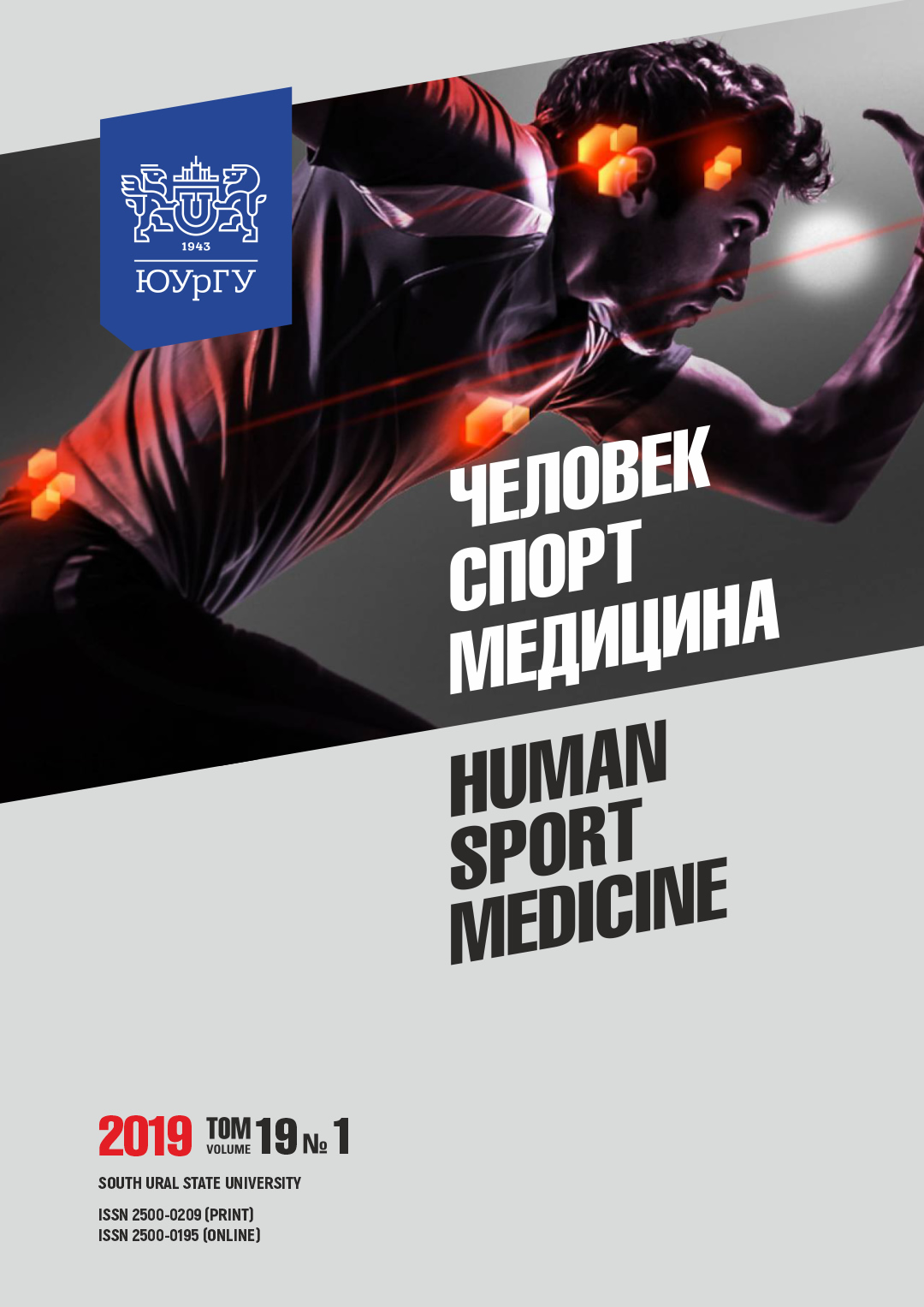AGE-RELATED FEATURES OF MORPHOFUNCTIONAL STATUS AND TEMPERATURE HOMEOSTASIS IN HIGHLY SKILLED FOOTBALL PLAYERS
Abstract
Aim. The article deals with establishing the features of morphofunctional characteristics and temperature balance in highly skilled football players aged 17–21. Materials and methods. Within the framework of the study, the following methods have been used: questioning; anthropometry; dynamometry; spirometry; echocardiography; electrocardiography at rest and before physical activities; functional measurements and tests; assessment of the thermal status. 18 football players participated in the study (the team from the Russian State University of Physical Education, Sport, Youth and Tourism). Results. We revealed significant age-related differences in the integral indicator of the life index. At the first stage of maturity, we registered an increase of the life index, which indicates the improvement of the functional reserves of the respiratory system under regular physical loads connected with playing football. We studied the indicators of physical performance and aerobic capacities in the football players of different age groups. We revealed age-related differences in physical performance during a two-stage PWC170 test with a submaximal physical load of 70–80 % of VO2 max. We also revealed age-related differences in the indicators of external respiration in highly skilled football players. The assessment of the thermal status was conducted with temperature measurement in 5 areas: the forehead, chest, abdomen, thigh, and back (CorTemp® body temperature recorder). The most pronounced differences in temperature were registered in athletes with various results in the PWC170 test. Conclusion. The data obtained indicate an adaptive increase of average-weighted skin temperature during the first load and active involvement of such a mechanism of heat loss like sweat evaporation during the second load. Two types of temperature curves are distinguished in accordance with temperature changes: the inert type and plastic type. The plastic type is characterized by a decrease of average skin temperature below the temperature at rest after a pause before the second load. The inert type is characterized by a smooth increase in skin temperature during the first load. A further increase was two times lower than that of the first load.
References
References on translit
Copyright (c) 2019 Human. Sport. Medicine

This work is licensed under a Creative Commons Attribution-NonCommercial-NoDerivatives 4.0 International License.















